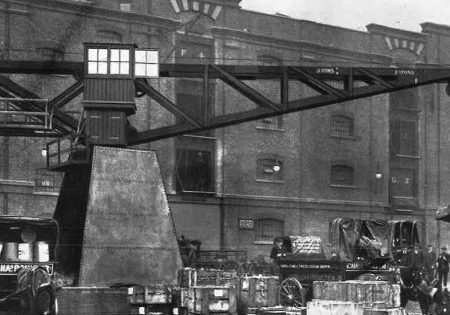VT’s role in the provision of accessibility in a modern society
As a part of academic work a few years ago, I considered the Disability Discrimination Act 1995 (DDA 1995), since replaced by the Equality Act 2010, and a comparison between the safety provisions of the then Lifts Directive 95/16/EC, current Directive 2014/33/EU and those of the Machinery Directives, 98/37/EC, now 2006/42/EU, in terms of meeting the requirements and intent of the two Acts. The outcome provided food for thought together with a few concerns.
I recall the rush to meet the 1 October 2004 deadline for business and premises compliance under DDA 1995 and surveying buildings and access routes identifying changes in level and barriers to access.
Thereafter, I became involved in a few cases in which claims were brought against organisations that were alleged to be, or to have behaved in a way which was in breach of, or contrary to, provisions of the 1995 Act.
The original intent underlying the development of the Lifts Directive was that it should cover all passenger carrying lifts and that the Machinery Directive should not consider lifts for the transport of persons (excepting for maintenance access and similar non-standard operations), which is evident in the exclusion of lifts from the 89/392/EEC Directive.
In 1993, Directive 93/44/EEC amended Directive 89/392/EEC introducing provisions in relation to certain types of lifts for lifting persons, which included hold-to-run controls, but permitted automatic operation in the case of lifts serving specific levels. Subsequently, Directive 98/37/EC recognised provisions for the lifting of persons but excluded lifts which fell within the criteria of the Lifts Directive, and EHSR 6.2 provided that controls for movements should be of the maintained command type, except in the case of machinery serving specific levels.
UK BS6440: 1999 was not aligned with the 1998 Directive (unsurprising perhaps given the exclusion of lifts from the earlier Directive) and included no requirement for hold-to-run controls. This served only to confuse matters, and it wasn’t until Directive 2006/42/EC and Standard EN 81-41: 2010 that clarity was restored, albeit that BS EN 81-41: 2010 was not published until 2011, and not finally effective until June 2011. And BS 6440 2011 does not require hold-to-run controls.
So, the confusion persisted and continues in that BS 6440: 2011 remains current with certain types of lift installed during the years prior to the implementation of Directive 2006/42/EU and EN 81-41: 2010 operating with characteristics which differ from those of EN 81-41, and without hold-to-run controls.
In my view, the hazards and risks associated with platform lifts are well understood (in terms of trapping of materials, limbs, etc., between the carrier and shaft enclosure) and a mandatory inclusion of hold-to-run controls seems eminently sensible.
Whilst the 0.15 m/s limitation upon carrier speed (and subsequent time inherent limitation upon carrier travel) may have alleviated some concerns of the regulators and standards drafters, the effect of the speed restriction has been to constrain innovation and product development, which, in some instances, results in designers circumventing the restriction by way of semantic interpretations of the regulation. In my view, this regulatory halfway house has now run its course, and an alternative approach is required.
An unfortunate consequence of the protracted timelines and conflicting provisions of the Directives and product Standards is of a legacy of lift installations which are of varying levels of compliance and of accessibility lifts which were installed under different iterations of the Directives, some of which are safer than others (or perhaps less unsafe than others) and lacking in terms of certain safety provisions.
A question arises in relation to the use of accessibility lifts for the transport and movement of goods and/or materials. My experience is of some manufacturers prohibiting this form of use, whilst others happily sanction such use, with others not discriminating one way or the other or omitting to include such information in the lift instructions.
Similar issues arise in relation to lift duty-cycles, with accessibility lifts often installed as a cost preference to a traditional passenger or goods/passenger lift, but with wholly unsuitable equipment and/or component duty ratings. Indeed, it is many years now since this problem first came to the fore in the form of a fatal accident involving gearbox duty ratings. It seems that we have yet to resolve this particular element of equipment design, or perhaps of buyer awareness.
Add to the ambiguous regulatory environment a number of serious accidents, including several involving young children, and we find ourselves in a position in which questions arise in relation to the safety of some of these lifts.
The factors underlying and driving the confusion included an unduly rushed, pressurised and chaotic standards development process (and subsequent delay) driven by a need to quickly develop and deploy equipment in order to meet the regulatory compliance deadline for existing buildings and, of course, that of cost, together with a level of undue influence exerted by vested interests.
In my mind, there was never a moral case for applying the Machinery Directive as a means of cost reduction achieved by way of reduced safety provisions for passenger carrying lifts. Particularly in that these requirements could, and should, have been encompassed within the Lifts Directive. And that this could have been readily achieved through improved drafting of the Lifts Directive and the development of associated product standards covering the accessibility sector.
Indeed, in light of the specific accessibility requirement included in the 95/16/EC Directive and retained in the 2014/42/EU Directive, the acceptance of a lesser level of safety for less abled lift users by way of an application of the Machinery Directive appears perverse, albeit that I do acknowledge the cost versus proportionality argument. The provision of an accessible built environment is inherent to modern developed societies and, as such, requires a proactive and consistent approach from our industry.
My experience is of some manufacturers prohibiting this form of use, whilst others happily sanction such use, with others not discriminating one way or the other or omitting to include such information in the lift instructions.
I still see BS 6440: 2011 all too regularly quoted in sales proposals and in relation to the design of equipment and, occasionally in terms of achieving regulatory compliance, which of course, cannot be, and could never have been achieved by way of this Standard. Provisions of BS 6440: 2011 are contrary to the requirements of Directive 2006/42/EU and in certain respects potentially unsafe. Rather than continuing to apply this Standard, the industry would be better focused upon identifying those installations which are non-compliant and/or which present particular safety hazards and risks, and upon modernising or replacing these.
Moving on to consider EN 81-70, I have previously been critical of what I consider to be an unduly restrictive effect that elements of this Standard impose upon aesthetic design. Whilst I remain of the view that the Standard is overly prescriptive, I note that many architectural designers simply ignore certain of its provisions. A greater freedom of aesthetic expression and space for pragmatism in design and compliance is required.
Whilst our EN 81 Standards are currently under review by CEN (which is perhaps unsurprising given the emergence and/or identification of particular shortcomings inherent to some of these and some of the more erratic interpretations of design and safety requirements applied by some manufacturers and Notified Bodies), perhaps the time is also ripe to include an in-depth review of lift accessibility standards.
The Grenfell Tower disaster is driving legislative change in the form of the Building Safety Act, the London Plan and other U.K. legislation and Guidance. The immediate effect upon standards is observable in BS EN 81-76: 2025 relating to Evacuation Lifts, which introduces more complex requirements for such lifts and which is likely reflective of the form of change to come in other lift standards. Again, the management of increasing levels of engineering design and safety complexity will increase pressures upon industry competency, management and personnel development.
Having considered developments over 25 years or more, it is important to recognise that the sector represents a significant equipment and service market and, in my view, one that should be better presented and represented. Whilst there are competent manufacturers and contractors who produce and install excellent products, the sector is also beset by a lesser number of less diligent manufacturers and contractors, whose activities and products detract from the reputation of the sector and which place lift users at risk. Whilst much of equipment design and supply is European Union and European Economic Area centred, there are a number of well-known U.K.-based manufacturers, and it would be good to see these develop and internationalise.
The sector is characterised by integrated products, many of which require only a suitable electrical supply, and little by way of structural elements. With a few notable exceptions, sales and installation are undertaken by independent firms rather than by the manufacturer. On occasion, this separation of manufacturer and installer leads to problems of compliance and installation quality. It may be that the imminent implementation of Machinery Regulation (EU) 2023/1230 will resolve these, although I guess we’ll need to wait and see.
Given that it is now 20-plus years since the practical implementation of DDA 1995, there should now be a growing market for modernisation/replacement of the thousands of lifts installed around that time which, unless I am missing something, is not apparent in industry marketing activity?
In terms of maintenance and product support, the sector includes some exceptional contractors and manufacturers together with a few not-so-good contractors, together with examples of poor product support and unduly early product obsolescence and/or withdrawals of spare parts and technical support.
Traditionally, matters surrounding the concept of “Accessibility” have presented a multifactored challenge, involving multiple stakeholders and which may, in analytical terms, be considered to be “Political,” incorporating wide reaching sociotechnical, moral and economic questions. In this respect, I can commend recent PhD research published by Isobel Pagendam through University College London (UCL) (Standardising the Vertical City: Exploring the Politics of Lift Accessibility Standards, 2024, UCL), and its consideration and analysis of the complex politics of lift accessibility standards, which I might suggest underly some of the historical regulatory and standards development issues that I have outlined here above.
In summary, vertical transportation is critical to the provision of an accessible built environment in a modern society, and in this respect as an industry we, together with our regulators and standards makers, will need to raise our game.
Get more of Elevator World. Sign up for our free e-newsletter.










